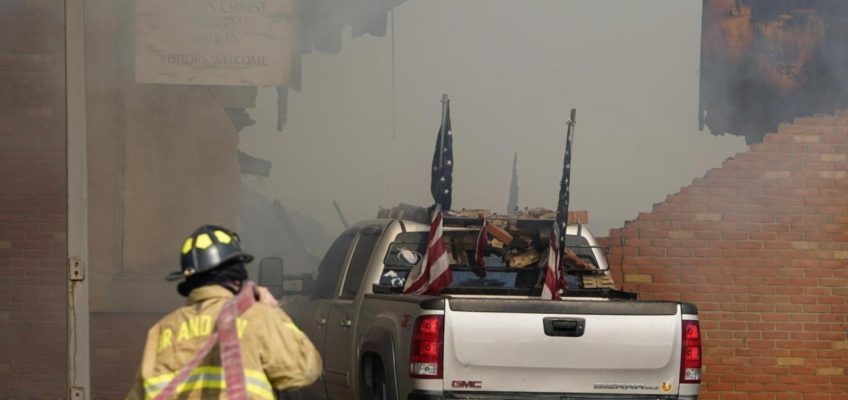DUBLIN — When the Vikings are finally able to move on from Sunday’s 24-21 loss to the Pittsburgh Steelers, hopefully they’ll be able to fully appreciate that they got to be a small part of NFL history despite the result.
The first regular-season game the NFL hosted in Dublin was a smashing success by pretty much every measure.
It wasn’t simply that 74,512 showed up to Croke Park on a Sunday afternoon to watch the Vikings take on the Steelers. It was that fans from both sides flooded the streets of Dublin in the 72 hours or so leading up to the game.
A slice of Americana paired quite nicely with the many pints of Guinness being poured at pubs near and far.
The weather couldn’t have been much better a few hours before kickoff as the rainy weather usually synonymous with Dublin held off in favor of beautiful sunshine that made everything picturesque
That made for a very pleasant 30-minute walk from the popular Temple Bar area to Croke Park. There were more Steelers jerseys than Vikings jerseys on the trek, as well as Kansas City Chiefs jerseys, New England Patriots jerseys, Dallas Cowboys jerseys, and yes, Green Bay Packers jerseys, among others.
The representation was befitting of a country without an NFL team that is still crazy about American football.
The optics changed inside Croke Park, however, as black and gold consumed a majority of the stands. The game might as well have been played in Pittsburgh. Any hope the Vikings had of it feeling like a neutral site went out the window as fans continued to trickle into their seats. There was no doubt most of them came to support the Steelers.
There were some nice touches before kickoff that actually made it feel like a home game, including Super Bowl champion quarterback Ben Roethlisberger and longtime Steelers running back Jerome Bettis riling up the crowd. There was even a gigantic Terrible Towel covering a section near the 50-yard line during player introductions, the lettering colored green, white and orange in reference to the Irish national flag.
Minnesota Vikings wide receiver Justin Jefferson (18) speaks during a press conference ahead of their match against Pittsburgh Steelers in Dublin, Friday, Sept. 26, 2025.(AP Photo/Frank Augstein)
The scene of screaming Steelers would have made longtime owner Dan Rooney proud after he did so much work to get the team entrenched in the country where his forebears were born.
“I know he’s smiling at us,” Steelers head coach Mike Tomlin said. “It’s just an honor to fulfill his vision and to bring the NFL to Dublin.”
Though the Steelers were technically the home team, and it certainly felt like it with the amount of Terrible Towels twirling in the stands, the Vikings were well represented across the pond.
“It was a great atmosphere,” Vikings head coach Kevin O’Connell said. “The energy of the building was fantastic.”
The vibes were immaculate from the start thanks to Irish singer Lyra belting out an incredible rendition of the country’s national anthem. The crowd singalongs to “Zombie” by Irish rock band the Cranberries, and “Live Forever” by English rock band Oasis later induced goosebumps. The halftime performance by rising star Myles Smith featured an ode to the locale as green, white, and orange smoke surrounded his band at the start of his set.
As incredible as the experience was on a broad scale, there were some wonky parts to the operation, like the game clock and the play clock in the end zone being turned off, which forced Vikings quarterback Carson Wentz to look around the stadium to keep an eye on the time. That created chaos in some stressful situations and played a role in the Vikings being called for delay-of-game in the final minute.
“I thought we handled it OK,” Wentz said. “Obviously, it got us at a very bad time of the game.”
The playing surface also appeared to be slippery at times, evidenced by Vikings star receiver Justin Jefferson losing his footing on what might have been a touchdown had he been able to keep his feet.
“That’s not really something that I put blame on or I criticize,” Jefferson said. “Whether it’s raining, snowing, we’ve still got to go out there and run good routes and get open.”
As much as the loss stung in real time, Wentz and Jefferson agreed that the experience was something they won’t soon forgot. The same goes for Steelers quarterback Aaron Rodgers, and not just because he beat the Vikings one more time in his storied career.
“The whole experience was fantastic,” he said. “Shoutout to the country and everybody who made this happen.”
There’s no doubt the NFL will be back. Would Rodgers come back himself?
“You guys still going to have Guinness here?” he said with a smile. “Yeah, probably.”
For the Vikings, it’s off to London, where they’ll play Cleveland on Sunday at Tottenham Hotspur Stadium.
Pittsburgh Steelers head coach Mike Tomlin from left, Pittsburgh Steelers quarterback Aaron Rodgers (8) and Pittsburgh Steelers defensive tackle Cameron Heyward (97) celebrate after winning the NFL football game between Minnesota Vikings and Pittsburgh Steelers at Croke Park stadium in Dublin, Sunday, Sept. 28, 2025.(AP Photo/Ian Walton)
Related Articles
Takeaways from the Vikings’ 24-21 loss to the Steelers
Frederick: Vikings may not have an answer at quarterback
After investing in the offensive line, it remains an issue for the Vikings
Vikings can’t complete comeback in 24-21 loss to Steelers in Dublin
Photos: Vikings vs. Steelers in Dublin




